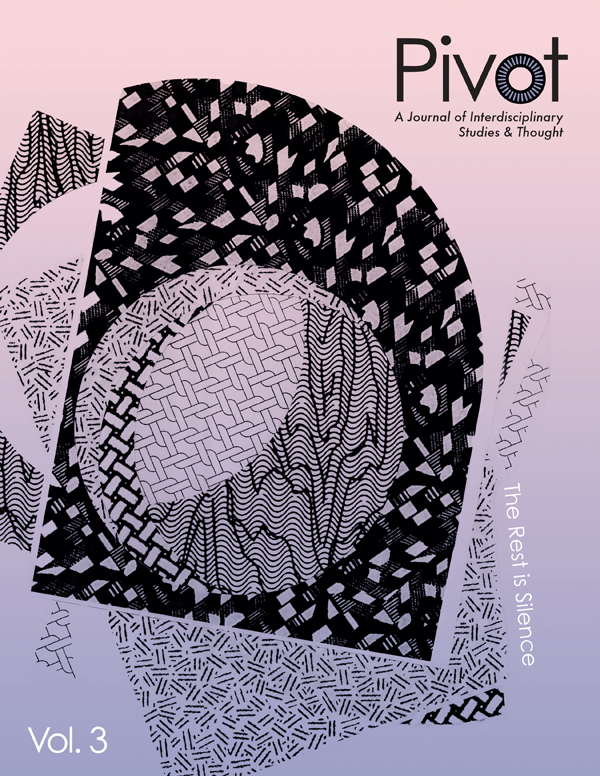Modern Times, the ‘Pre-Digital Hum‘, and the Impossibility of Silence
DOI:
https://doi.org/10.25071/2369-7326.35860Abstract
The article considers Charlie Chaplin's 1936 feature _Modern Times_ as highly influenced by the sound transition. Even though the film appeared when film sound had undergone narrative integration and synchronized sound had ceased to attract the spectator's attention in its own right, _Modern Times_ frames cinematic sound as unnatural. Thereby it employs techniques and experiences from the sound transition and uses them for comic purposes. At the same time, the relations beween the film's depiction of machines, its use of sound and music, and the flow of time is constantly under negotiation. What results is a pre-digital era Hum that is constituted by an impossibility of silence in film after the sound transition, an overall mechanical hiss of the cinematic apparatus that inscribes itself into the film, and the aestheticization of rhythm and noise in the modern era.References
Bowser, Eileen. The Transformation of Cinema: 1907-1915. Berkeley and Los Angeles: U of California P, 1994. Print.
Brooks, Jodi. “Ghosting the Machine: The Sounds of Tap and the Sounds of Film.” Screen 44.4 (2003): 355-378. Print. DOI: https://doi.org/10.1093/screen/44.4.355
Brooks, Peter. The Melodramatic Imagination: Balzac, Henry James, Melodrama, and the Mode of Excess. New Haven and London: Yale UP, 1976. Print.
City Lights. Dir. Charles Chaplin. Perf. Charles Chaplin, Virginia Cherrill, Florence Lee, and Harry Myers. United Artists: 1931. Film.
Denson, Shane. “Incorporations: Melodrama and Monstrosity in Whale’s Frankenstein and Bride of Frankenstein.” Melodrama! The Mode of Excess from Early America to Hollywood. Eds. Frank Kelleter, Barbara Krah, and Ruth Mayer. Heidelberg: Winter, 2007. Print.
Denson, Shane. “Tarzan und der Tonfilm. Verhandlungen zwischen “science” und “fiction”. „Ich Tarzan“ Affenmenschen und Menschenaffen zwischen Science und Fiction. Ed. Gesine Krüger, Ruth Mayer, and Marianne Sommer. Bielefeld: Transcript, 2008. 113-130. Print.
Gunning, Tom. “The Cinema of Attractions: Early Film, its Spectator and the Avant-Garde.” Early Cinema: Space – Frame – Narrative. 78 Ed. Thomas Elsaesser. London: British Film Institute, 1990. 56- 62. Print.
Howe, Lawrence. “Charles Chaplin in the Age of Mechanical Reproduction: Reflexive Ambiguity in Modern Times.” College Literature 40.1 (2013): 46-65. Web. DOI: https://doi.org/10.1353/lit.2013.0007
Kelleter, Frank. “Schallmauern im Lichtspielhaus: Populärkultur, “Trans-National America” und The Jazz Singer.” Film Transnational und Transkulturell. Ed Ricarda Strobel, and Andreas Jahn-Sudmann. Munich: Wilhelm Fink, 2009. 107-120. Print.
Maland, Charles J. Chaplin and American Culture. Princeton: Princeton UP, 1989. Print.
Modern Times. Dir. Charles Chaplin. Perf. Charles Chaplin, Paulette Goddard. United Artists: 1936. Film.
Müller, Corinna. Vom Stummfilm zum Tonfilm. Munich: Wilhelm Fink, 2003. Print.
Potter, George. “The Tramp and the Culture Industry: Adorno, Chaplin, and the Possibility of Progressive Comedy.” Arizona Quarterly: A Journal of American Literature, Culture, and Theory. 69.1 (2013): 73-90. Print. DOI: https://doi.org/10.1353/arq.2013.0002
Sklar, Robert. Movie-Made America: A Cultural History of American Movies. New York: Vintage, 1994. Print.
Spadoni, Robert. “The Uncanny Body of Early Sound Film.” The Velvet Light Trap 51.1 (2003): 4-16. Print. DOI: https://doi.org/10.1353/vlt.2003.0011
Stewart, Garrett. “Modern Hard Times: Chaplin and the Cinema of Self-Reflection.” Critical Inquiry 3.2 (1976): 295-314. Print. DOI: https://doi.org/10.1086/447890


